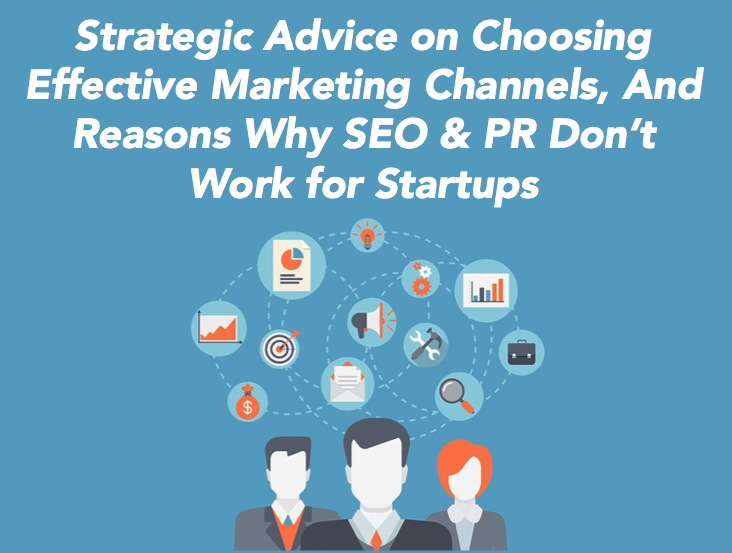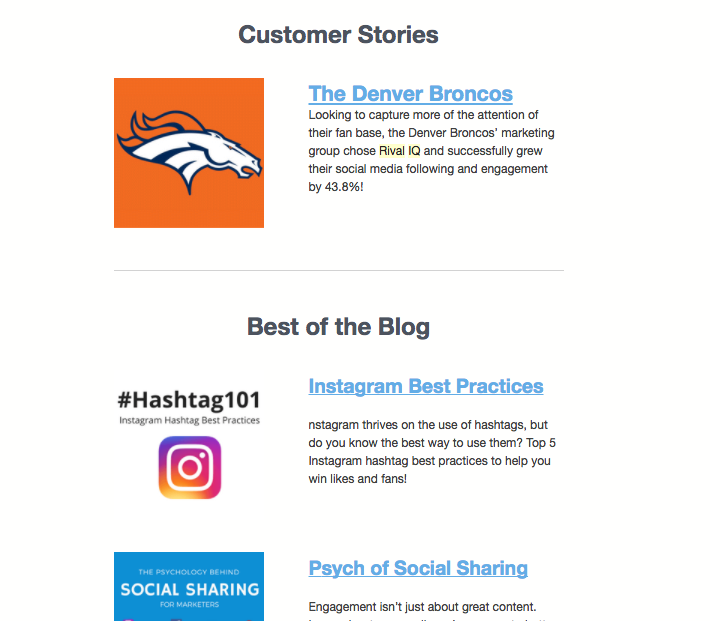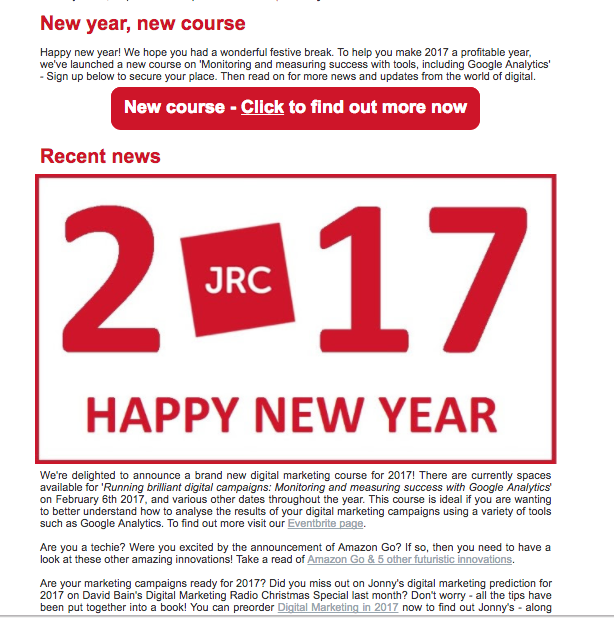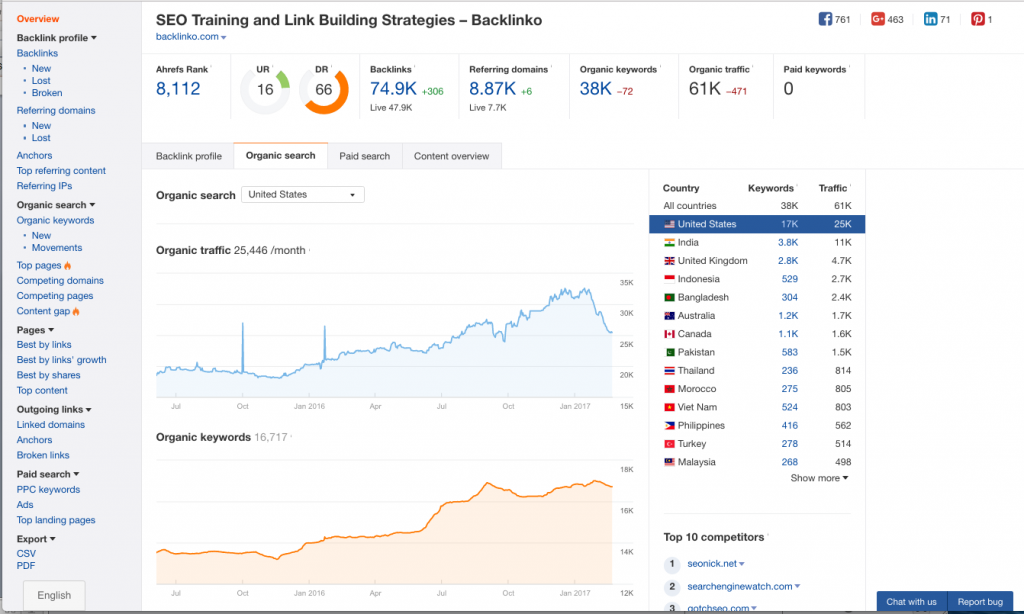90% of startups fail.
Some of the 10% that don’t hit it big, and some become revolutionary businesses. But for every fortunate startup, a myriad of others fail.
According to Fortune.com, this is either due to a lack of market need (42%) or insufficient capital (29%), or because they simply had all the wrong people on board (23%).
When starting a new company, it’s vital for you to know you’re headed in the right direction immediately.
The following question is the one I get asked the most: “How long does it take for SEO to start delivering results”? The thing is, just as the way we communicate with each other has evolved over the past couple of years, SEO has never been stagnant.
Back in the day, the plan was to add as many keywords to your website as possible. It was also important to create a unique page for each search query so that each page had the same targeted keywords in the title, meta description, and URL. Ugh.
Guess what? This strategy is not going to cut it anymore. With the increased emphasis on topics and semantic search in Google, there is no way to make SEO work by only targeting a few specific keywords.
So, how long does it take for SEO to deliver results, you ask? Theoretically speaking, it takes anywhere from four to six months, but in practice, the data you’ve aggregated will only give you a picture of your organic traffic, which isn’t going to lead to any conversions (and this is what you should be after).
And what about digital PR? People don’t buying goods or services at face value. We buy into stories, emotions, relationships and established brands. We want a connection. And those cannot be made overnight. So, to have a successful PR strategy, we marketers have to start with research.
Normally, your PR strategy won’t start delivering any results before you cross the sixth month off your calendar. And, of course, if you are able to keep your company afloat (read: have money in the bank). Within 12 months you should be able to witness a steady growth of both branded and direct traffic as well as a larger number of brand mentions.
What startups really need when it comes to digital marketing channels:
- Anything that brings results right away
- Strategies that will prove to be effective in the long run, but at the same time affect traffic and sales immediately
In other words, make sure you invest your precious time and money in something that will pay off immediately.
Instant Is The New Black: Channels That Bring Results Right Away
Social Media Channels
Social media is all about building relationships, which tend to grow exponentially as you let word of mouth do its job. The sooner you begin, the sooner you’ll be able to start growing your audience. Social media marketing, when done right, can attract more customers, more traffic, and more conversions.
According to a report from Social Media Examiner (2014), 97% of marketers engage in social media marketing.
Social media channels are among the most instantaneous results-wise. However, it takes some time to build a social media community, which is a precious commodity. You must select your goals carefully in order for this marketing channel to benefit you to the fullest.
My advice here: forget about engagement, likes and shares, and pay close attention to clicks and conversions. That’s the recipe for driving traffic (clicks) and attracting users that will become your potential clients (and that’s what you can control with conversions).
Sometimes, it takes some nurturing to win a client over. First, your new users that come from your SMM channels need to become registered ones. And only after email marketing and remarketing come into play will those users become your clients.
You need to play around with various tactics to learn what makes a user share their personal information with you, and go through all the following steps that registration entails.
Sometimes, you’ll have users that are ready to make a decision “right here, right now” without going through additional marketing funnels. These do exist in nature. And if you want to maximize the effect here, then you should pay more attention to those users who’ve visited your website yet haven’t made a purchase, meaning you need to add remarketing to your arsenal and work with those leads.
Email Marketing
As you all know, I’m a huge social media fan (because it allows you to see and analyze the results of your marketing activities instantly). Email marketing is a low-hanging fruit if you want results, and it’s also among my favourite marketing channels. There’s one problem, though. You are going to need subscribers to send your emails to (duh). But good things take time, so you’ll have to grow your list of registered users gradually.
Here are a couple of handy tips that should help you in such a challenging endeavor as converting your users, or even turning them into your brand ambassadors.
- Quit writing boring promotional texts
Should I say more?
I mean, we all have tasteless copy shoved in our faces on a daily basis.
Besides, you don’t really need these types of texts as they don’t tout the uniqueness of your brand. They simply add to the white noise other businesses are blindly creating.
This email below is just another type of sales email that won’t stay on top of the user’s mind or build a relationship with them.
- Use the power of personalization and storytelling
When writing your emails, let your company’s founder do the “talking”, and share real life stories and experiences. This will add a touch of warmth and make your message memorable, and earn you some users that are loyal to your brand.
Let’s take Brian Dean’s email, for example. He utilizes this strategy in each and every email he sends by sharing an exciting story from his life. This will never get boring. Below is an example of one of his mass email blasts in which he shares how he used to struggle with SEO, and then was able to resolve the problem with the help of one single tip from a skillful expert:
Actually, I’ve been putting this tactic into practice myself when crafting emails for Digital Olympus, and what I found is that it’s much easier for me to create this kind of email rather than trying to put together a promotional one. And the reason for that is because it flows naturally.
Here’re a couple of those emails:
http://us13.campaign-archive1.com/?u=7e11040b92e78da74f40715eb&id=6266a01336
http://us13.campaign-archive1.com/?u=7e11040b92e78da74f40715eb&id=a6f8965f94
By the way, if you want to receive these emails, here’s the link.
- Use videos, photos, and gifs with the founder of your company
I’m sure you’ve heard about the research conducted some time ago by the 3M Corporation and Zabisco stating that visuals are processed 60,000 times faster by the brain than text.
Knowing there’s a real person behind a brand establishes a connection between the company and its customers.
Videos are a nice addition if you want to properly introduce your users to your product, or if you want your users to become part of your brand’s continuing story. And GIFs are a great match for emails, too, as they don’t need to be clicked in order to be played, and they work well with most email clients.
- Publish exclusive content
Easier said, than done, but if you really want to be your brand’s biggest promoter and a spokesperson, then you’d better share something they haven’t read yet.
To do that, I would go with videos. You can make a video using your phone anytime, anywhere. This type of video may not be in HD, but it’s more about content than video resolution. Make it useful. Don’t waste your time filming videos about something that everyone has already read on blogs. It could be something small yet very useful.
Be responsive. Share your own thoughts about a breaking news story. Or maybe you can be the first one to translate an interesting article from a foreign language.
And always stay true to yourself. The way you express your viewpoint and experience in your articles can make them stand out from the rest.
Paid Channels and Remarketing
If you still haven’t considered one of a paid channels, then you are missing out.
Here are a couple of options:
- Remarketing
- Ads on social media
- Google AdWords
Should you be using remarketing? Yes, yes and yes.
Thirty percent of consumers have a positive or very positive reaction to retargeted ads, as opposed to the 11 percent who aren’t that excited about them, a comScore study says.
The following is going to sound like a broken record, but segment your audience already! Your website visitors are not all the same. With remarketing, it is crucial to segment your audience in order to pinpoint and recognize the distinctive intent and behavior of your site’s users.
Whether you’re remarketing on Facebook, Twitter or the Google Display Network, the space on a banner ad is pretty tight, yet it is supposed to make a big impact. The best remarketing campaigns, in my opinion, utilize a minimalistic design with one bold visual and one clear message. And when it comes to choosing your call to action, choose the verb carefully – it must be compelling, sharp and to the point.
It’s a common practice to exclude your converted users. There’s no need in chasing them down anymore. But you still need to generate repeat customers and strengthen your brand awareness. That’s why I’d recommend that you tag your post-conversion landing pages to remarket to your converted users. Come up with a low-frequency and long lasting campaign to retarget your market and keep your brand at the top of their minds.
Social Media Ads
You’ve gotta love social media ads. Let’s say you want those 15 dog grooming professionals to keep you and your cute little pet on trend. So you target those people on Twitter and add them to different lists. Bam! Now you’ll never miss out on the latest dog’s hair fashion.
With the help of tools like Followerwonk, you can export lists of users that are following a specific brand and launch a campaign targeting those Twitter accounts. Gone are the days of privacy…
However, for some niches the cost per click might be astronomically high. That’s why CPC may not be a very cost-effective model. So, if you are in doubt, consider this: it’s worth a shot. You never know how things are going to turn out with your social media ads.
And don’t forget the pictures! Make them look nice by either mastering Canva yourself, or hiring someone who can do it for you.
Google AdWords — now this is where things get a little messy. Understanding AdWords requires a lot more resources and time than other channels. Follow these steps if you don’t want to see your money go to waste:
- Well-executed keyword research
- Some carefully crafted ad copy for each group of keywords
- Neat and well-structured landing pages for each group of keywords
Now, it wouldn’t be fun, if that was it, would it?
As a nice addition to the aforementioned steps, you also have to set up analytics for those groups of keywords. Doing so will allow you to measure your progress (if any) as well as how effectively you’re spending your ad budget.
Before launching any campaign, I highly recommend that you test your UTM labels and other GA triggers. Only after that can you launch your ad campaigns. And a tool like Google Tag Manager may come in handy. Not only does it allow you to track your conversions, but it also detects micro-conversions, which indicate how users interact with your site or landing page (e.g., clicking different buttons).
Content Marketing
Content marketing is king. Yeah, yeah, yeah.
But the question remains: what kind of content do you want to deliver in order to attract new users that are going to register and later become your clients?
If you represent a startup, then you can’t brag about having a big audience, so there’s no point in creating content for your blog as it will have zero outreach.
Outreach, just like most things that are worth fighting for, requires a ton of effort but won’t necessarily guarantee you clients. What outreach does is, create social buzz and links, but that’s not something we’re really looking to tie our hands with. So, the question here is whether you can use content marketing to attract the type of users you want in the short-term.
You’d be surprised to know the answer is yes. But you have to do the planning part first.
- Find out what articles and sites drive traffic to your rivals’ websites.
The sites that generated that traffic can be found using SimilarWeb’s referral traffic report. It may be a little tricky to spot good content, but you can browse around those sites and find the pieces that mention your competitors.
- Track down bloggers in your niche that reference different products, companies or services that are both ranking high in Google and receive a steady flow of organic traffic.
Tools like SEMrush and Ahrefs will help you with that.
SEMrush is a suite-type online marketing platform. It determines different trends within your niche, identifies a range of keywords, audits your on-page SEO, and checks rankings and backlinks.
This graph shows how many organic visitors seobook.com receives on a monthly basis as well as SERP features information, traffic cost and the number of keywords bringing users to the website.
As you can see, traffic from organic search has been steady over the last year and its increasing gradually.
Ahrefs is a similar tool well-known for backlink intelligence, SEO audits, content marketing analysis and link prospecting.
Just like with SEMrush’s Organic Research Report, Ahrefs’ Organic Search Report also displays the number of organic visitors as well as sudden spikes in traffic activity and changes in organic keywords.
There are plenty of other tools out there, too, and it would take me hours to name them all, so let’s not digress here.
- Think of ways you can involve those experts in your article. Why do I bother chasing those guys around, you ask? You need them because you want them to mention you on their websites, and you’ll want to consider mentioning their names in your work as well.
I would suggest conducting research and then begging asking those experts to take a survey and express their opinions as to whether or not they agree with your research deliverables.
If you don’t feel like getting your hands dirty by researching anything, then simply interview the experts and publish their answers in the form of an interview, or quote them in one of your blogs. However, make sure you have enough experts articulating their views. Finding two industry specialists probably won’t cut it.
- Add a call-to-action button
You have to figure out where you’re going to place this magic button so that your content doesn’t leave your potential clients hanging in the air, thinking, What now? After all, you don’t want to lose every user that visits your page and you do need to convert at least some of them.
- Craft some VIP content that is accessible after registration only
This will capture those who are interested in what you have to say, but not ready to purchase just yet. Then let email marketing do the rest.
In this section, we walked through the advantages of using email marketing, social media, content marketing and paid marketing channels. We determined the steps one needs to take in order to get short-term results delivered on time, and also briefly touched on strategies like personalization in email marketing, which is irreplaceable for building brand awareness.






